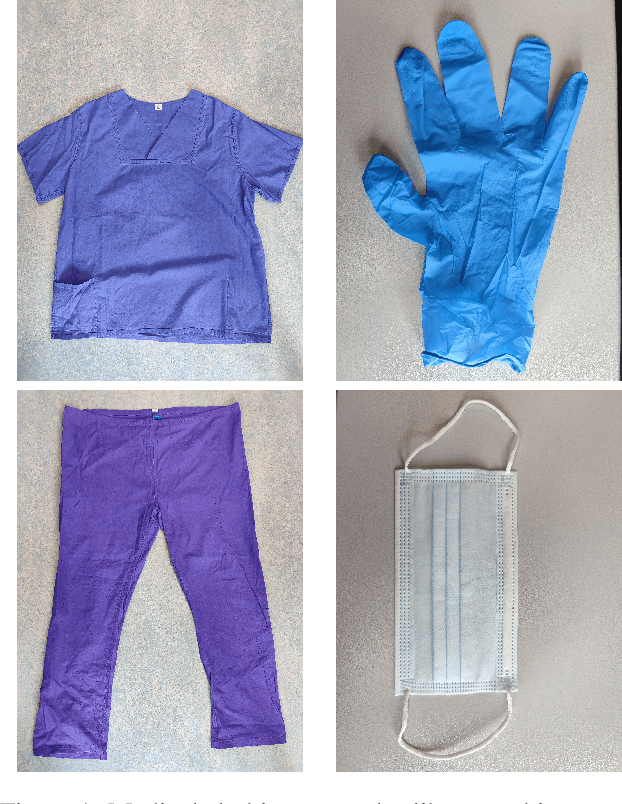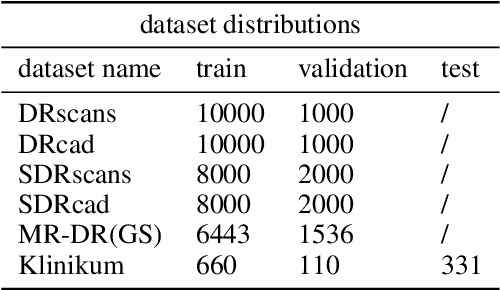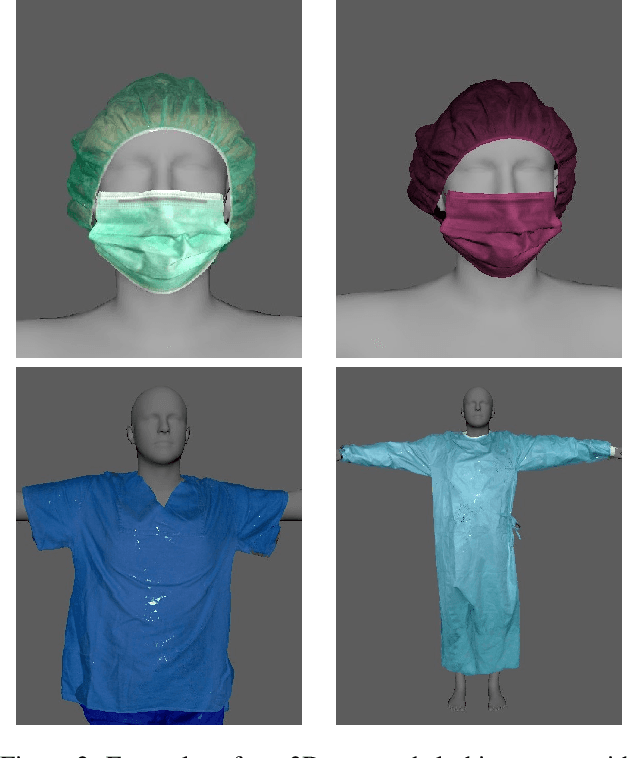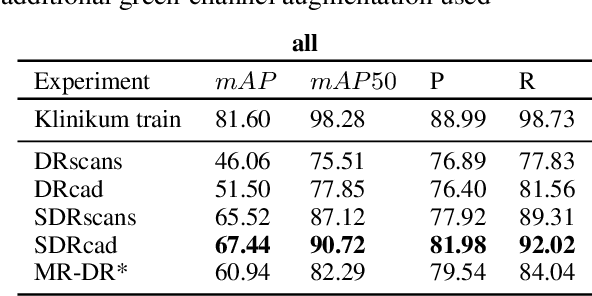Comparison of synthetic dataset generation methods for medical intervention rooms using medical clothing detection as an example
Paper and Code
Sep 23, 2022



The availability of real data from areas with high privacy requirements, such as the medical intervention space, is low and the acquisition legally complex. Therefore, this work presents a way to create a synthetic dataset for the medical context, using medical clothing as an example. The goal is to close the reality gap between the synthetic and real data. For this purpose, methods of 3D-scanned clothing and designed clothing are compared in a Domain-Randomization and Structured-Domain-Randomization scenario using an Unreal-Engine plugin or Unity. Additionally a Mixed-Reality dataset in front of a greenscreen and a target domain dataset were used. Our experiments show, that Structured-Domain-Randomization of designed clothing together with Mixed-Reality data provide a baseline achieving 72.0% mAP on a test dataset of the clinical target domain. When additionally using 15% of available target domain train data, the gap towards 100% (660 images) target domain train data could be nearly closed 80.05% mAP (81.95% mAP). Finally we show that when additionally using 100% target domain train data the accuracy could be increased to 83.35% mAP.
 Add to Chrome
Add to Chrome Add to Firefox
Add to Firefox Add to Edge
Add to Edge